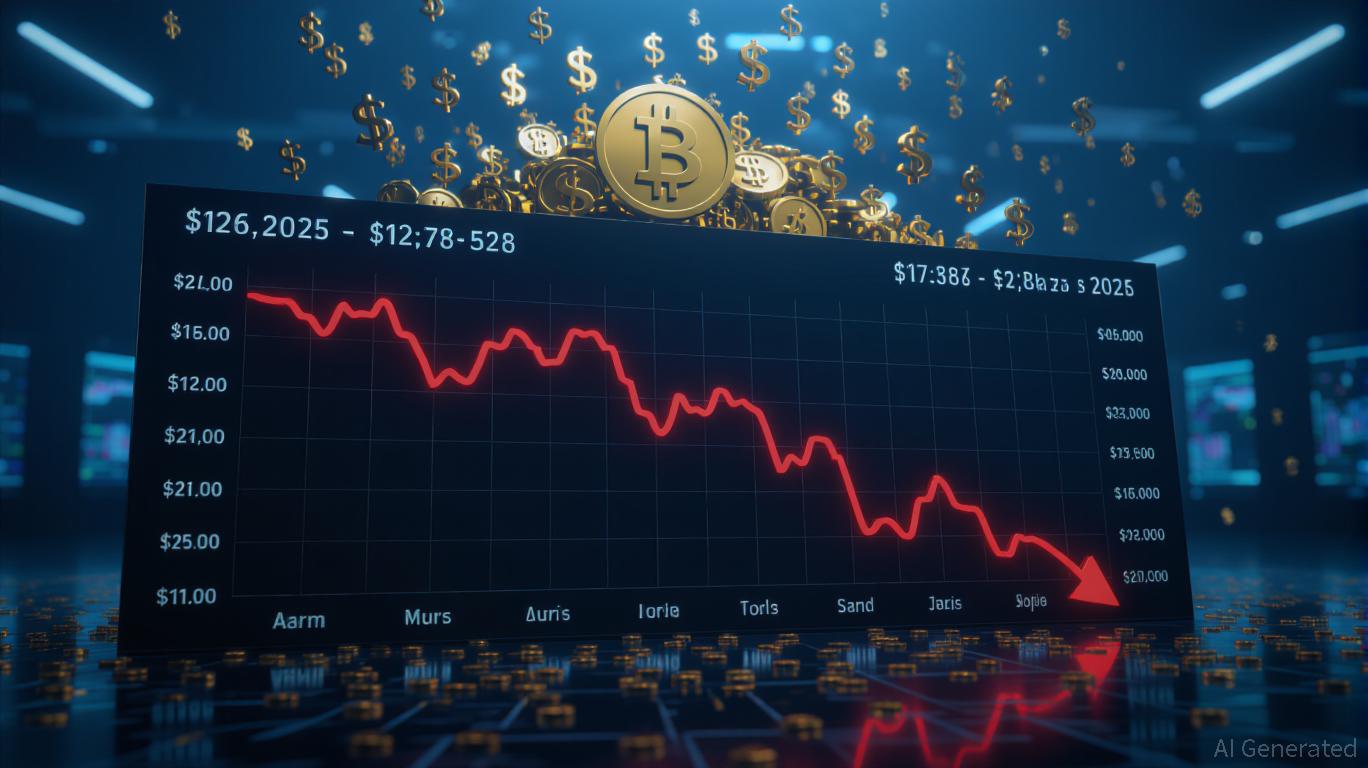What Led to the Latest BTC Plunge and Its Implications for Cryptocurrency Investors?
- Bitcoin's 2025 crash erased $1T in value, exposing systemic risks from macroeconomic shocks and regulatory gaps. - Trump's tariff rhetoric triggered $20B in crypto liquidations, while SEC's Fuse Energy decision highlighted fragmented oversight. - Retail panic contrasted with institutional resilience, as IBIT and gold ETFs saw $5.8B inflows amid market instability. - Experts debate Bitcoin's fundamentals, with some forecasting $100k-$135k ranges and others warning of prolonged volatility.
Systemic Risk Triggers: Regulatory Uncertainty and Macro Shocks
This market crash was the result of several converging factors, with the most significant being the abrupt intensification of tariff threats from the Trump administration in mid-October 2025. This development sparked a worldwide shift toward risk aversion, resulting in $20 billion in leveraged positions being liquidated in a single day—the largest such event in the history of cryptocurrencies

Regulatory measures—or the absence of them—were also a contributing factor. Although the U.S. Securities and Exchange Commission (SEC)
Market Psychology: Panic, Hedging, and Institutional Resilience
This downturn has exposed the delicate mindset of crypto traders. Many retail investors, who had taken on leveraged positions, suffered widespread liquidations as Ethereum alone
Despite the turmoil, institutional investors have demonstrated stability. The iShares Bitcoin Trust (IBIT) saw $3.3 billion in new investments in June 2025, while gold funds such as SPDR Gold Shares (GLD) attracted $2.5 billion, indicating a move toward safer assets
Regulatory Responses and Financial Stability
Regulatory intervention has been limited in the wake of the crisis. The SEC’s recent ruling on Fuse Energy marks progress toward clearer guidelines but does little to address the broader systemic risks
There is no consensus among analysts about what comes next. Optimists such as Standard Chartered and Bitwise
What This Means for Investors
This sharp downturn serves as a crucial lesson for crypto investors. The combination of unclear regulations, global economic shocks, and leveraged trading has created a highly unpredictable environment where even experienced participants can incur significant losses. Effective diversification and risk management have become essential. While institutional players continue to add to their BTC holdings, individual investors should proceed with caution, avoid excessive leverage, and pay close attention to regulatory developments.
The SEC’s gradual moves toward clearer rules, such as its decision on Fuse Energy, provide some optimism for a more orderly market. However, until major risks like cross-market contagion and fragmented regulation are resolved, cryptocurrencies will continue to be a high-risk, high-reward investment. The current market is testing the endurance of its participants, and the experiences of late 2025 will influence the next phase of the crypto industry’s growth.
Disclaimer: The content of this article solely reflects the author's opinion and does not represent the platform in any capacity. This article is not intended to serve as a reference for making investment decisions.
You may also like
The Emergence of ICP Caffeine AI: A Fresh Driving Force for Blockchain Expansion Powered by AI?
- DFINITY Foundation launched ICP Caffeine AI in November 2025, claiming to reduce AI inference costs by 20–40% through on-chain execution. - Institutional partnerships and a deflationary token model drove a 385% ICP price surge in Q4 2025, but dApp activity fell 22.4%, signaling engagement challenges. - The platform’s hybrid cloud partnerships and chain-of-chains design aim to bridge DeFi and traditional finance, yet regulatory scrutiny and C3.ai’s financial instability pose risks. - Experts remain divide

Trump Signs "Genesis Mission" Order to Boost AI Innovation in the United States

France : Larchevêque Unveils The Bitcoin Society

Nasdaq Biotech’s $212M RAIN Funding Sparks 130% Jump
- Enlivex Therapeutics invests $212M in RAIN tokens via a Nasdaq-listed biotech's first prediction market-focused strategy, driving a 130% price surge. - The move coincides with former Italian PM Matteo Renzi joining Enlivex's board, sparking speculation about institutional crypto adoption and political influence. - RAIN broke key technical resistance levels, reaching $0.006974 and $1.7B market cap, but analysts warn of potential reversals if $0.00800 resistance fails. - Despite Enlivex's 23% YTD stock dec
